Compass Travel Vietnam
A close-up of the process of making a fragrant beer with the scent of Hanoi green rice, which can be eaten with both pig intestines and lobster
It takes 25-30 days to complete a batch of craft beer. From the tank in the factory, the beer keg, and the pouring tap to the glass, all must be kept cold below 4 degrees Celsius to retain the full flavor.
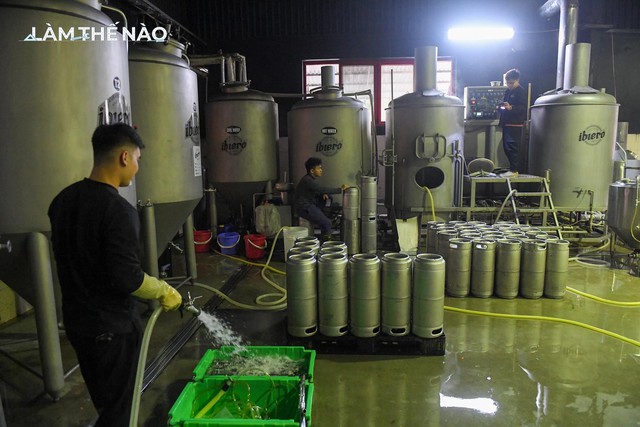
Beer is the third most popular beverage in the world (after water and tea). Many European countries have a thousand-year history of craft beer before producing it on an industrial scale in the 19th century. In Vietnam, on the contrary, people are used to industrial beer cups. brought by the French more than 130 years ago, while craft beer has only become known in the past 10 years.
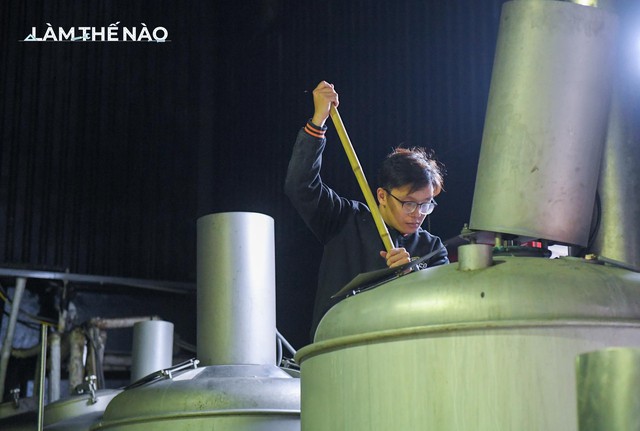
Craft beer often has a rich flavor, customized with local ingredients, brewed in small factories with a capacity of less than 1,000 liters per batch. At the Ibero brewery in Hanoi, each batch of Quang Anh will brew 1,000 liters in 8-10 hours. After that, the beer must undergo a fermentation period and stabilize its flavor for 25 to 30 days before it can be sold.
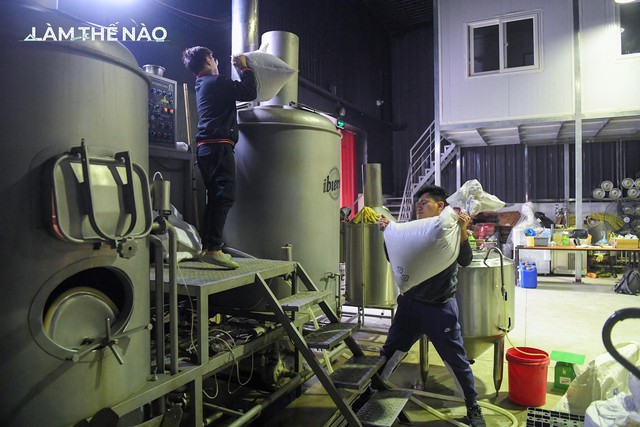
To brew 1000 liters of beer, you need to use up to 320 kg of malt (made from barley), several kg of hop pellets, yeast and water.
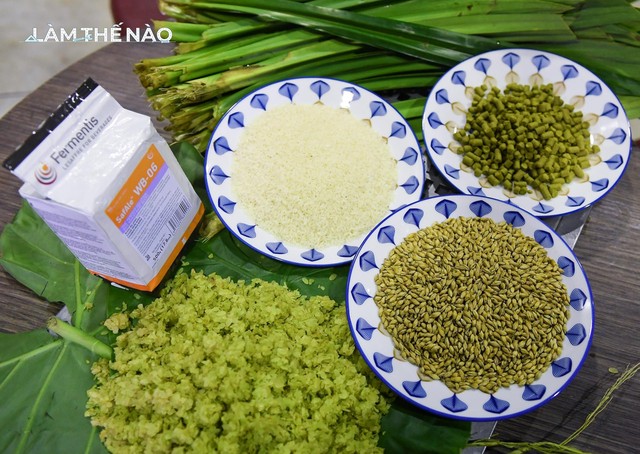
The biggest difference between craft beer and industrial beer is that the ingredients are carefully selected and of good quality. At this factory, malt is imported mainly from Czech, Germany, and America. Added to that are local ingredients to create a unique quality. In the photo are the ingredients of Hanoi autumn beer with typical ingredients such as green rice, rice, and sticky rice leaves.
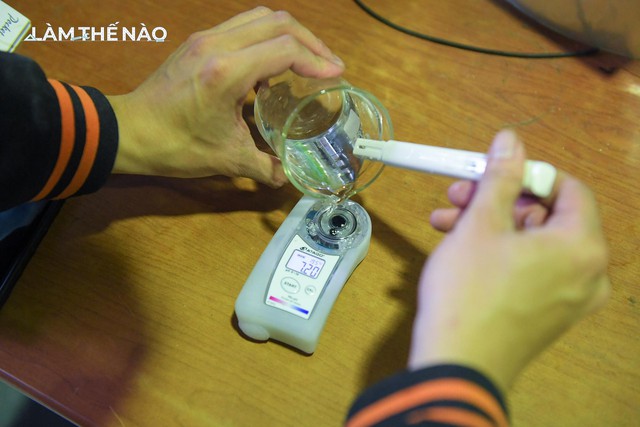
Because water makes up about 80% of beer, it has an important influence on flavor. Previously, people had to locate breweries in places with good-quality underground water sources. But now, water treatment technology has developed. Brewing water is filtered through the RO system to ensure neutral pH (equal to 7), controlling the concentration of Na, K, Mg salts. The purer the water, the more enhanced the beer’s flavor.
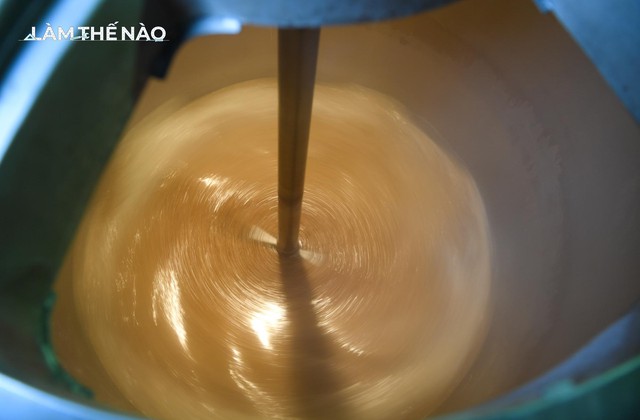
First, the ingredients are put into the pot so that the enzymes turn the starch in the malt into sugar. This process usually lasts 75 to 90 minutes. The brewer can adjust the temperature to create the desired beer flavor. High temperatures will create sweeter and richer beer, while low temperatures will produce beer with higher alcohol content.
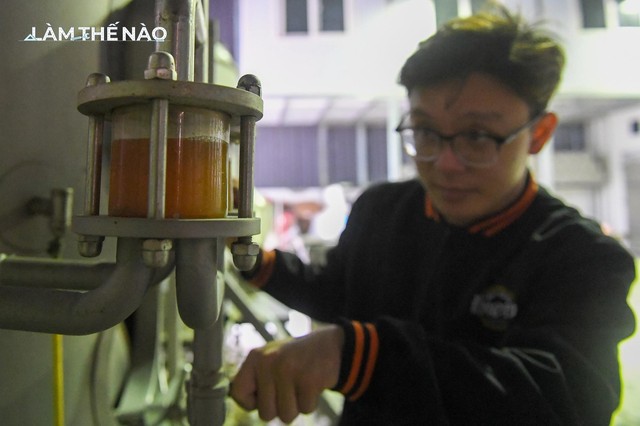
After that, the ingredients will be transferred to another pot and filtered 3-4 times to get all the sugar solution. Quang Anh will monitor until all residue has been removed from the solution and the beer gradually becomes clear, meeting the requirements.
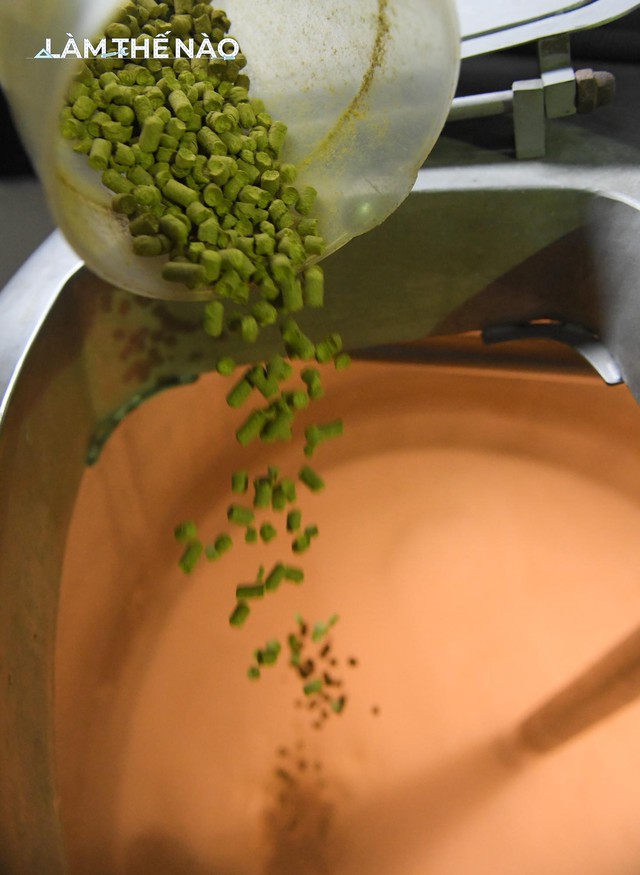
At this time, the beer will be returned to brew with hop pellets to create bitterness, aroma, and increase the beer’s preservation ability. Cooking time is from 60 to 90 minutes. Meanwhile, industrial beer often uses flower extract, which mostly only creates a bitter taste. Tuan Anh compared: If hops are like bones, then hops are like MSG. Bone marrow is expensive, it takes a long time to cook to get the juice, but it has a natural sweetness. MSG noodles are cheap, simple to cook, but the quality cannot be compared.
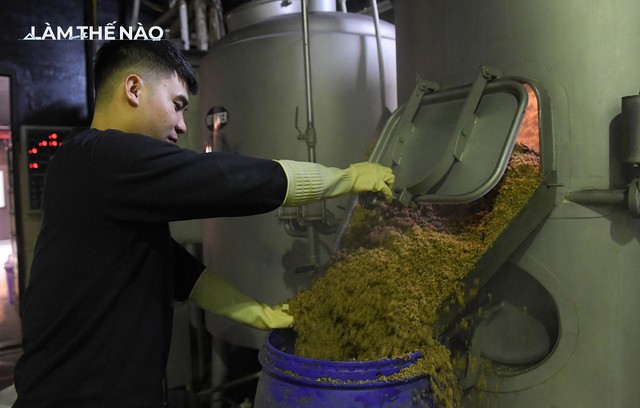
After that, the beer will move to the vortex settling pot. The beer liquid flows around the pot. The remaining hops and husks will gather in the middle and the beer will flow out from a spout at the edge of the pot. Beer residue is also used as food for livestock and poultry.
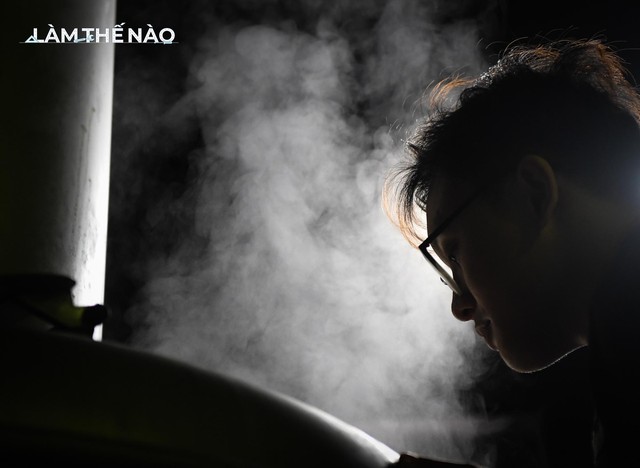
Combining green rice and sticky rice leaves into the production process needs to be carefully calculated and considered. Tuan Anh said that in order to find a new recipe, he threw away hundreds of liters of beer countless times.
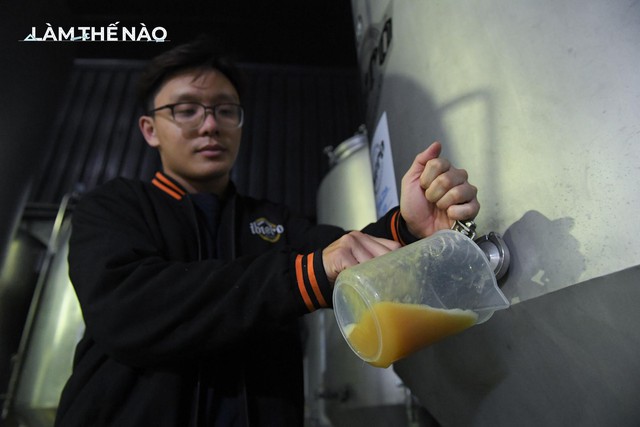
After brewing, the beer will be cooled at a temperature of 12 to 22 degrees and then left to ferment for 10 to 13 days. At that time, the sugar in the beer will turn into alcohol and CO2. After that, the beer is transferred to another tank for incubation. With the effect of gravity, the beer will be clear and have a stable flavor.
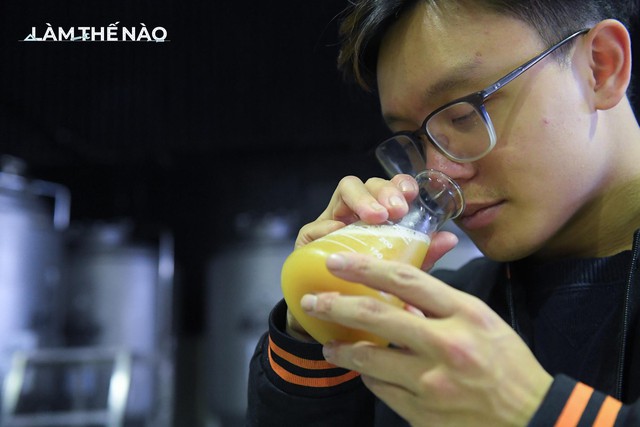
During this period, every 2-3 days Quang Anh will check the beer quality by sensory (color, smell, taste) and indicators such as alcohol concentration, bitterness, and CO2 content to ensure quality.
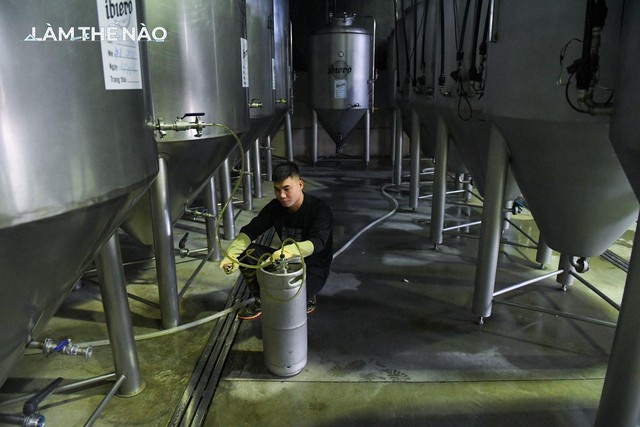
After about 25-30 days, batches of beer that meet quality standards will be drawn into kegs and transported to the restaurant. During the transportation process from the factory to consumers, beer is always kept cold at 4 degrees Celsius because if it is above this temperature, the beer will begin to release gas and gradually lose its flavor.
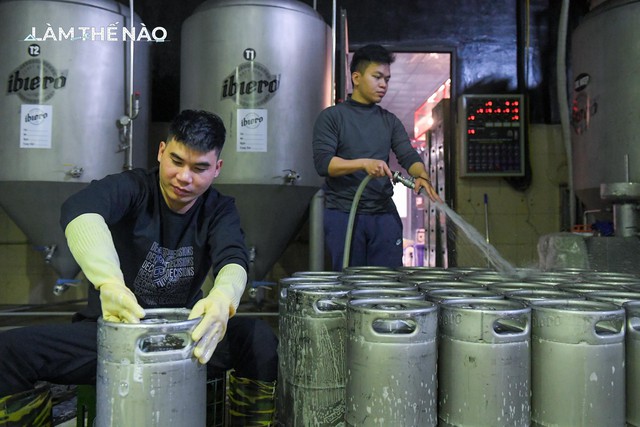
Beer kegs must be cleaned and sterilized at high temperatures after each use to ensure sterility before filling.
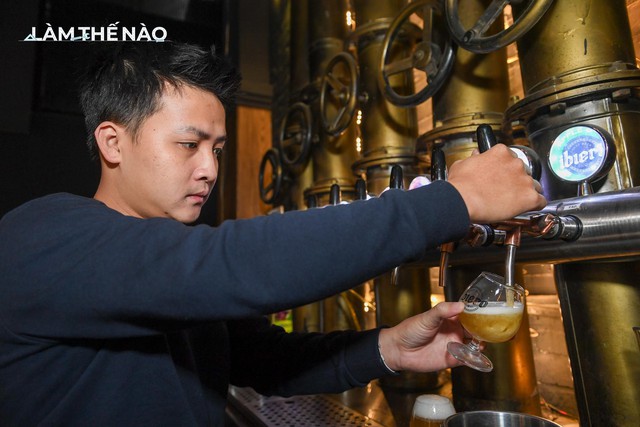
For draft beer, the transport vehicle must be a cold vehicle. Time from factory to restaurant is less than one hour. Every restaurant must have cold storage. The cold pouring spout and cups are also placed in the refrigerator.
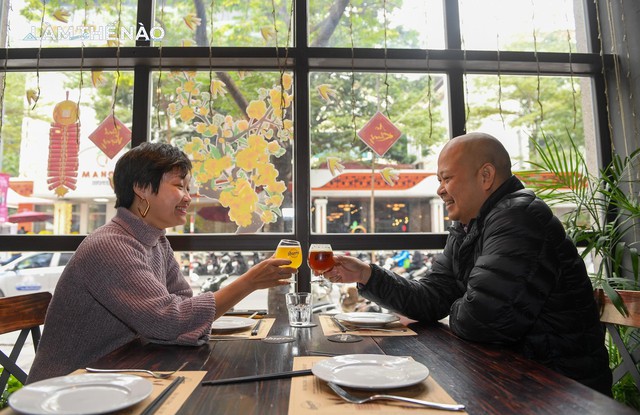
Mr. Do Giang Vinh, general director of Ibiero, said his point of view is to make beer to serve the needs of Vietnamese people, so he will refine the flavor such as less bitterness, sweeter aftertaste, and combine it with local ingredients such as green rice. , rice, orange, grapefruit; Can be combined with many types of food from Asia to Europe, from pig intestines to lobster, abalone, fish fin. Besides the factory, Ibero currently has 5 restaurants in Hanoi and Ho Chi Minh City to bring craft beer to the public.
According to
The post A close-up of the process of making a fragrant beer with the scent of Hanoi green rice, which can be eaten with both pig intestines and lobster first appeared on Compass Travel Vietnam.
A close-up of the process of making a fragrant beer with the scent of Hanoi green rice, which can be eaten with both pig intestines and lobster
vinlove.
Source: vinlove









